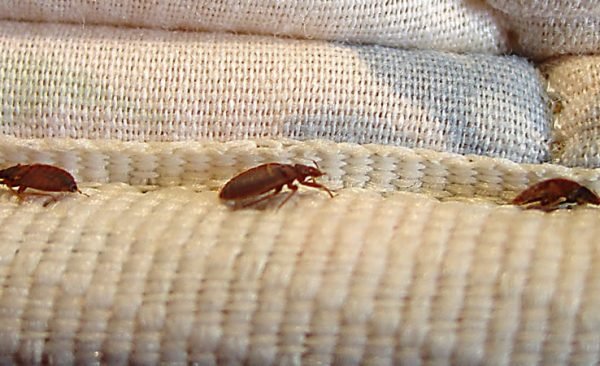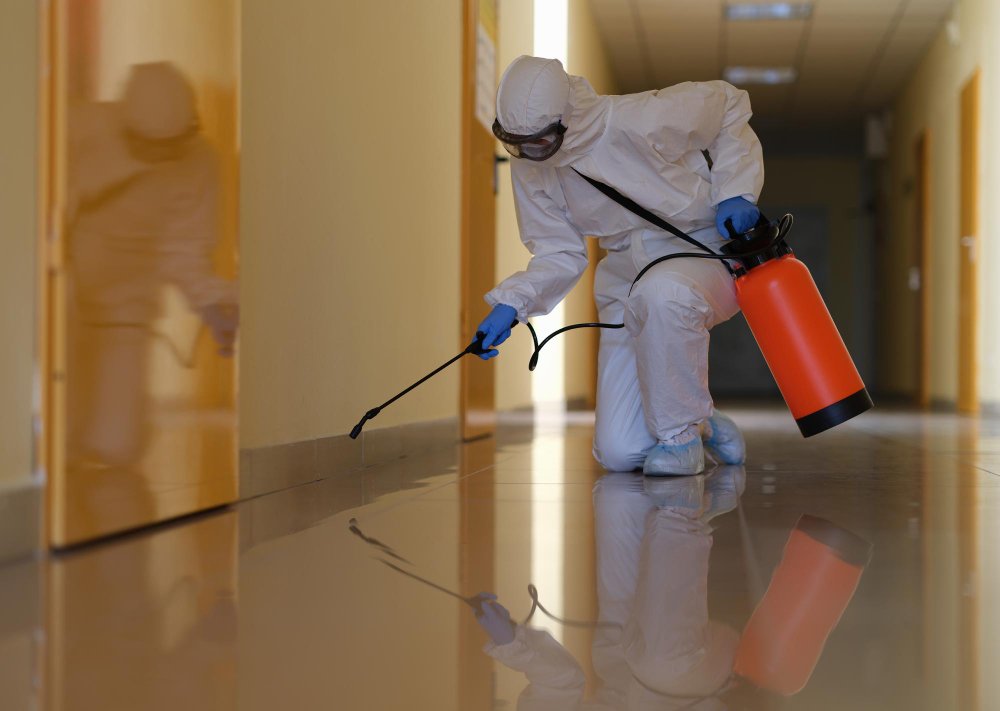Obtain Enlightened About the Types of Insect Control Methods and Their Advantages for Home Owners
Comprehending the various pest control approaches readily available to house owners is vital for effective parasite administration. Property owners that are knowledgeable can make strategic choices that not only address parasite problems yet likewise enhance the total quality of their living setting.
Chemical Bug Control Methods
Chemical parasite control techniques are a crucial part of integrated parasite administration strategies for house owners seeking effective solutions to pest invasions. These approaches include the application of chemical materials developed to get rid of or deter bugs that intimidate personal effects, wellness, and convenience. Typical chemicals made use of consist of pesticides, fungicides, rodenticides, and herbicides, each tailored to target particular parasites.
The key benefit of chemical bug control is its quick performance; numerous formulas supply instant outcomes, lowering pest populations significantly quickly. Furthermore, breakthroughs in chemical formulations have resulted in products that are a lot more eco-friendly and have lower toxicity levels for non-target organisms when applied properly.

Biological Parasite Control Methods
All-natural insect control techniques have actually acquired prestige as house owners look for much safer and extra sustainable options to traditional chemical techniques. Organic pest control strategies utilize all-natural killers, parasites, or microorganisms to take care of insect populaces effectively. This technique is not just eco-friendly but likewise lessens the risk of harm to non-target types, consisting of beneficial bugs and wild animals.
Among the most common biological control approaches entails introducing natural predators into the atmosphere. As an example, ladybugs can be made use of to control aphid populations, while nematodes target soil-dwelling bugs like grubs. Additionally, parasitoids-- organisms that reside on or within a host-- can be used to regulate specific pest species by laying eggs inside them, eventually causing their death.
One more strategy is making use of biopesticides, which are obtained from all-natural materials such as plants, germs, or minerals (bed bug exterminator). These items can successfully target insects while posturing minimal risk to human beings and animals. In general, biological parasite control strategies give home owners with an efficient means of parasite monitoring that straightens with eco-friendly principles, promoting a much healthier living setting while lowering dependence on synthetic chemicals
Mechanical Pest Control Strategies
Mechanical insect control strategies encompass a selection of approaches that physically prevent or remove bugs without the use of chemicals. These methods are specifically advantageous for homeowners looking for eco-friendly alternatives while making sure the safety of their space.
One typical method is using barriers, such as displays, nets, and catches, which avoid parasites from getting in homes or particular areas. Mounting window screens can properly keep pest control man bugs out, while using physical barriers around gardens can hinder larger bugs like rabbits or deer. In addition, mechanical traps developed for rats can capture and eliminate these insects without the demand for toxic compounds.
An additional effective technique includes using vacuums and brooms to eliminate parasites directly from surfaces. Routine cleansing and upkeep can substantially lower pest populations by removing food resources and concealing places. Using tools like ultrasonic parasite repellents can hinder various pests through audio waves that are undesirable to them yet faint to human beings.
Social Parasite Control Practices
Social parasite control techniques concentrate on changing the setting and monitoring strategies to develop problems that are much less conducive to pest invasions. These techniques are essential in keeping a well balanced community and minimizing the reliance on chemical interventions. By altering agricultural techniques, home owners can effectively deter pests while advertising plant health and wellness.
One usual approach consists of plant rotation, which disrupts the life process of bugs by altering the types of plants expanded in a particular area (bed bug exterminator). This not just decreases pest populations however likewise enhances soil wellness. In addition, intercropping-- planting diverse plants in distance-- can confuse parasites and minimize their ability to situate their favored host plants
Water monitoring is an additional vital element of cultural practices. Appropriate irrigation strategies can stop standing water, which offers as a breeding place for insects and various other parasites. Additionally, maintaining tidiness in and around the home, such as on a regular basis removing particles and food waste, can dramatically decrease parasite tourist attraction.
Integrating these social practices into a detailed parasite management technique permits homeowners to create an atmosphere that naturally discourages bugs, thus improving the efficiency of various other control methods while advertising sustainable horticulture and landscape design.

Integrated Bug Monitoring Approaches
Integrated Bug Monitoring (IPM) represents a holistic strategy that website here integrates different strategies to properly manage pest populations while minimizing environmental impact. This technique incorporates biological, cultural, physical, and chemical techniques to accomplish sustainable insect control. By analyzing pest populations and their all-natural adversaries, IPM emphasizes surveillance and identifying bugs prior to executing control procedures.
One of the core concepts of IPM is the use of limits, which develop the degree of parasite task that necessitates intervention. This makes certain that therapies are applied just when needed, lowering the reliance on chemical pesticides. Organic control methods, such as presenting natural predators or parasites, operate in combination with social methods like crop rotation and environment control to disrupt pest life cycles.
Furthermore, IPM motivates making use of least-toxic chemical choices when intervention is essential, focusing on items that pose marginal risk to non-target microorganisms and the environment. For property owners, taking on IPM comes close to not only enhances the effectiveness of pest management but also advertises a healthier living setting, cultivating biodiversity and minimizing chemical exposure. Ultimately, IPM equips house owners to make educated decisions that balance bug control with eco-friendly obligation.
Final Thought
Finally, comprehending the different bug control techniques encourages homeowners to make educated decisions pertaining to pest administration. Each method-- chemical, organic, mechanical, cultural, and integrated bug management-- provides unique advantages that cater to different needs and preferences. By selecting proper techniques, homeowners can efficiently manage pest populaces while decreasing health risks and environmental influences. This informed method adds to a much healthier living atmosphere, promoting overall wellness for animals and households alike.
Recognizing the numerous insect control methods available to property owners is essential for efficient insect administration.Chemical parasite control techniques are an essential component of integrated insect monitoring techniques for house owners seeking reliable services to pest infestations. Overall, biological insect control methods offer house owners with a reliable means of pest management that straightens with environmental concepts, advertising a healthier living setting while minimizing reliance on artificial chemicals.
Cultural bug control methods focus on changing the atmosphere and administration methods to produce conditions that are less conducive find more information to pest invasions.In final thought, understanding the various insect control approaches empowers property owners to make informed decisions regarding pest monitoring.